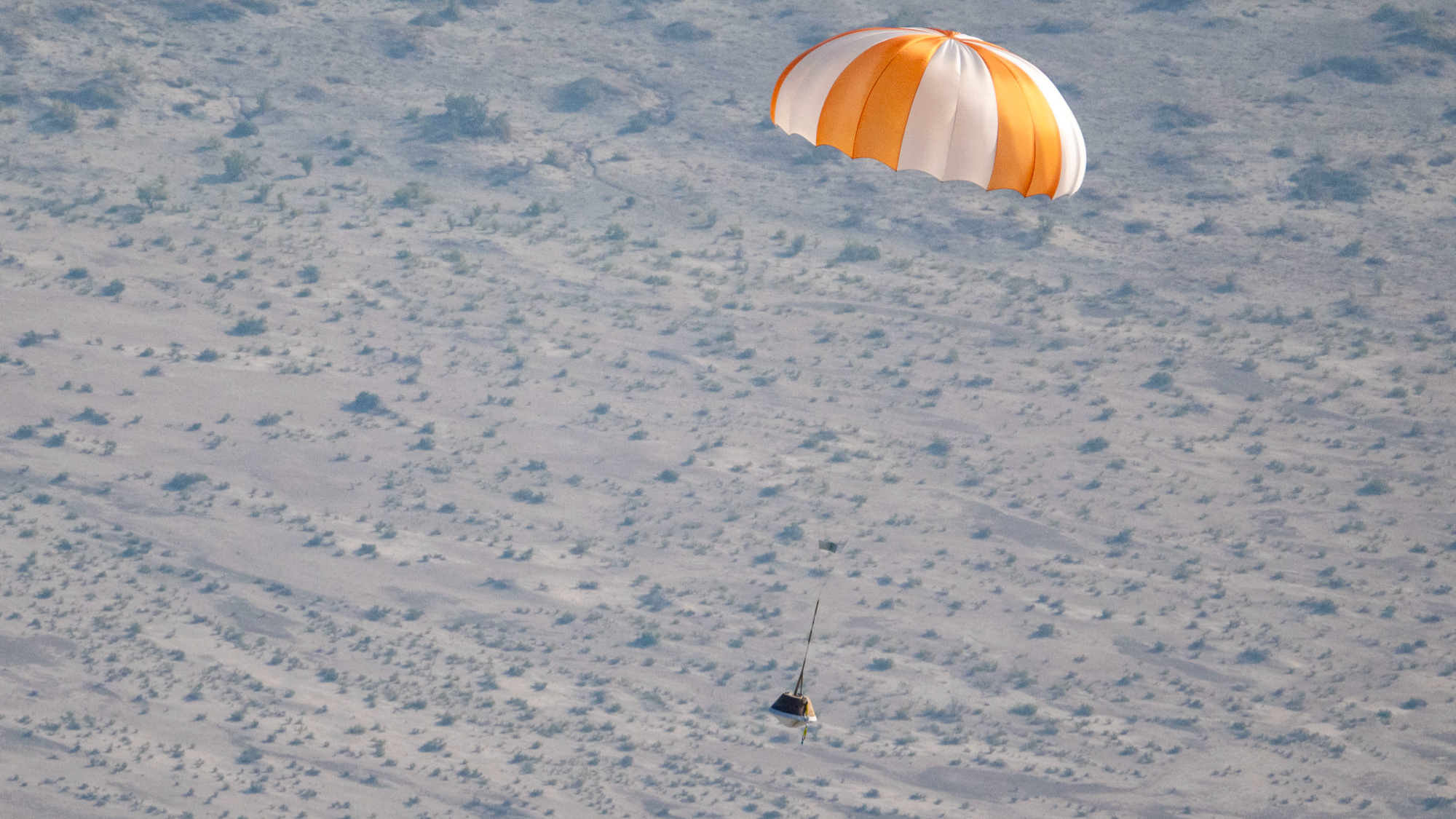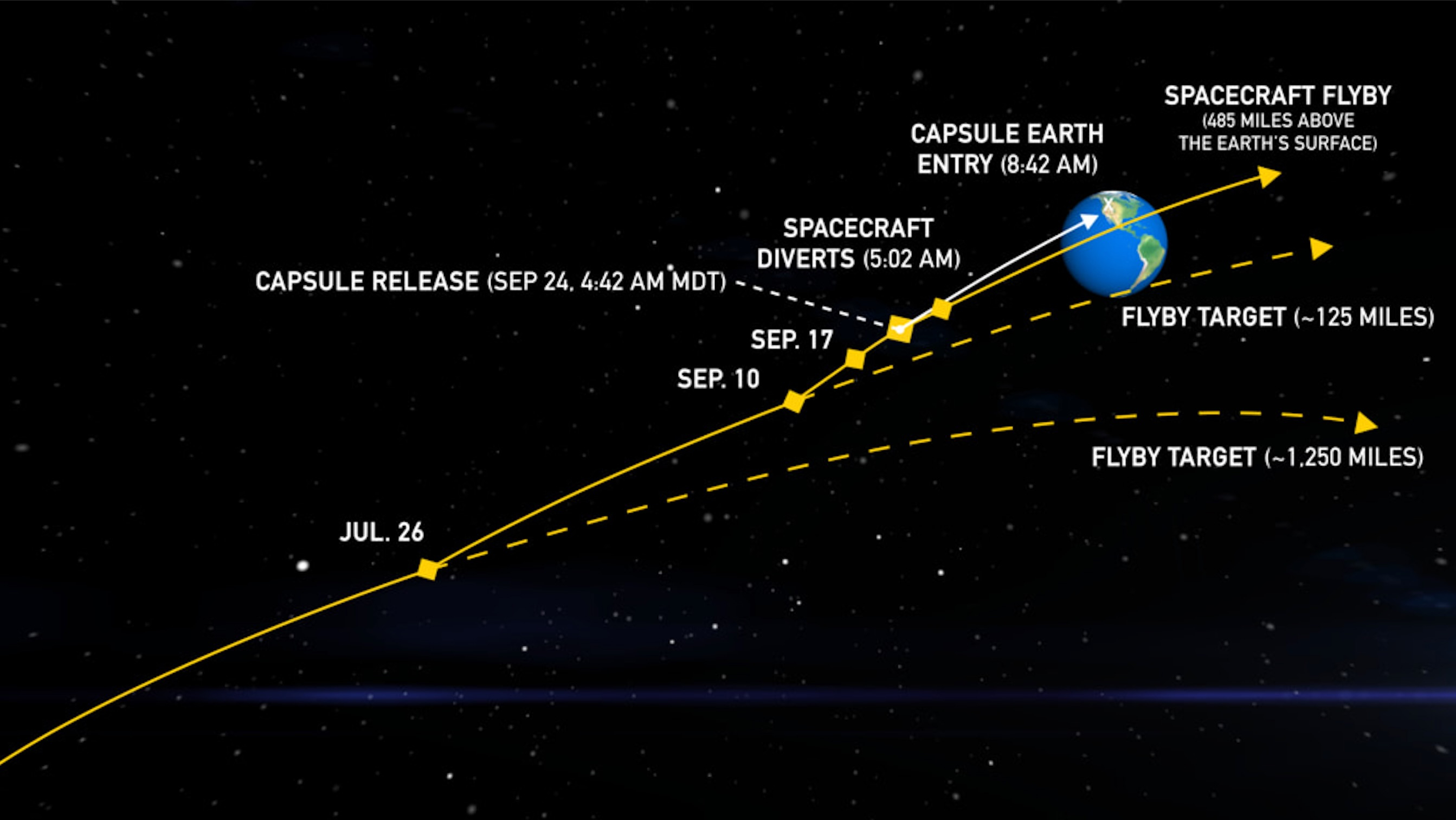
NASA's OSIRIS-REx probe performed one last trajectory-correcting maneuver on Sunday (Sept. 17) to set up the Sept. 24 arrival of its asteroid sample here on Earth.
OSIRIS-REx fired its thrusters briefly on Sunday, changing the probe's velocity by 7 inches (17.8 centimeters) per minute, NASA said.
"This final correction maneuver moved the sample capsule's predicted landing location east by nearly 8 miles, or 12.5 kilometers, to the center of its predetermined landing zone inside a 36-mile by 8.5-mile (58-kilometer by 14-kilometer) area on the Defense Department's Utah Test and Training Range," agency officials wrote in an update today (Sept. 19).
Sunday's engine burn was a tweak of a crucial Sept. 10 maneuver that set OSIRIS-REx on the proper course for capsule release on Sept. 24, which will take place about 63,000 miles (102,000 km) above Earth, NASA officials added. The probe is currently about 1.8 million miles (2.8 million km) from our planet, heading toward us at roughly 14,000 mph (23,000 kph).
Related: Dramatic sampling shows asteroid Bennu is nothing like scientists expected
The $1 billion OSIRIS-REx mission launched in September 2016 and headed toward Bennu, a 1,650-foot-wide (500 meters) potentially hazardous near-Earth asteroid.
OSIRIS-REx reached the space rock in December 2018, then studied it from orbit for nearly two years. On Oct. 20, 2020, the probe swooped down and snagged about 8.8 ounces (250 grams) of material from Bennu's surprisingly spongy surface.
Get the Space.com Newsletter
Breaking space news, the latest updates on rocket launches, skywatching events and more!
This precious cargo is about to come to Earth inside OSIRIS-REx's return capsule, which is scheduled to touch down in Utah shortly before 11 a.m. EDT (1500 GMT) on Sunday. You can watch the action live here at Space.com, courtesy of NASA TV.

After touchdown, OSIRIS-REx's sample will make its way to NASA's Johnson Space Center (JSC) in Houston, where the material will be curated and stored.
JSC will eventually send some of the asteroid dirt and gravel to scientists around the world, who will study it for clues about the early days of the solar system and the role that carbon-rich asteroids like Bennu may have played in life's emergence on Earth. Researchers think that such space rocks seeded our planet with organics, the carbon-containing building blocks of life, via long-ago impacts.
The main OSIRIS-REx spacecraft will keep on flying after its return capsule comes down to Earth. The probe will head toward another potentially hazardous asteroid, the notorious Apophis, on an extended mission called OSIRIS-APEX. The probe will reach Apophis in 2029.
Join our Space Forums to keep talking space on the latest missions, night sky and more! And if you have a news tip, correction or comment, let us know at: community@space.com.

Michael Wall is a Senior Space Writer with Space.com and joined the team in 2010. He primarily covers exoplanets, spaceflight and military space, but has been known to dabble in the space art beat. His book about the search for alien life, "Out There," was published on Nov. 13, 2018. Before becoming a science writer, Michael worked as a herpetologist and wildlife biologist. He has a Ph.D. in evolutionary biology from the University of Sydney, Australia, a bachelor's degree from the University of Arizona, and a graduate certificate in science writing from the University of California, Santa Cruz. To find out what his latest project is, you can follow Michael on Twitter.









